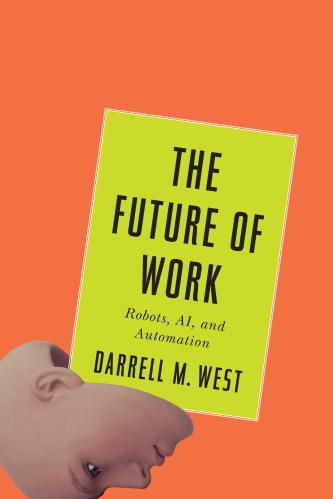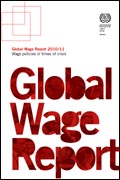Studies in this week’s Hutchins Roundup find tax revenues go up when countries impose a minimum corporate tax, automation has been the main driver of wage inequality increases in recent years, and more.
Want to receive the Hutchins Roundup as an email? Sign up here to get it in your inbox every Thursday.
A minimum corporate tax can limit tax avoidance and boost tax revenues
Multinational enterprises (MNEs) can and do shift profits across national borders to reduce their taxes. Aqib Aslam and Maria Coelho of the International Monetary Fund find that a minimum tax on domestically operating firms can help governments raise corporate tax revenues without severely damaging business activity. Combining country and firm-level data from 196 countries, 63 of which have minimum taxes, the authors estimate that imposing a minimum tax of 0.5% on firms’ revenues raises a country’s tax revenue by 7% and a 1% minimum tax on assets raises revenues by as much as 33%. Despite the increase in tax revenues, the authors do not find evidence that minimum taxes significantly affect firms’ average investment or employment decisions. The authors argue that while it would be preferable to adopt reforms that broaden the corporate tax base, imposing a minimum tax on direct, observable characteristics (such as revenues or profits) can make taxes harder to avoid and promote uniformity across taxpayers.
Wage inequality increases when workers are replaced by automation
Between 50%-70% of the rise in wage inequality has been driven by automation, find Daron Acemoglu of MIT and Pascual Restrepo of Boston University. Using data from 1980 to 2018, the authors find that workers who were most affected by automation lost 12% of their overall earnings, while earnings increased by 26% for groups unaffected by rapid automation. Routine tasks done by non-college educated workers (like manufacturing and clerical work) were disproportionately automated, explaining why workers without college degrees have had lower wage growth than college graduates in recent years. Despite the changes to the labor market, automation is associated with only a 3.8% increase in total factor productivity (the efficiency with which capital and labor are used). The authors conclude that “automation can explain a sizable fraction of changes in wage structure and real wage declines in the data, while having a tiny impact on productivity growth.”
New business applications surged during the pandemic of 2020
Using Census data, John C. Haltiwanger of the University of Maryland finds that new business formation surged beginning in June 2020 after a decline in the early stage of the pandemic. Specifically, new business applications were 20% higher in 2020 than in 2019, bringing the level to the highest since 2004, the earliest year for which data are available. The surge persisted at least through May 2021. In contrast, new business applications fell during the Great Recession of 2007-2009. One-third of the new businesses were for online and other non-store retail businesses. Haltiwanger notes that financial markets and intermediaries remained strong during the pandemic, a key difference between this and previous recessions. He hypothesizes that the pandemic sped up a previous trend toward telework and online retail.
Chart of the week: Federal legislation has boosted personal income throughout the pandemic
 Source: Hutchins Center calculations from Bureau of Economic Analysis data
Source: Hutchins Center calculations from Bureau of Economic Analysis data
Quote of the week:
“We have to take the economy through the pandemic and into a recovery phase, which has now started. We need to really anchor the recovery. We always talk about inflation anchoring and we are not oblivious to that. But the recovery needs to be firm, solid and sustainable,” says Christine Lagarde, President of the European Central Bank.
“You don’t remove the crutches from a patient unless and until the muscles have started rebuilding sufficiently so that the patient can walk on his or her own two legs. The same applies to the economy. We are at a turning point where, bearing in mind alternative variants, we are on that recovery path, heading firmly towards a return to the pre-COVID-19 level … We have plenty of flexibility, but in terms of economic outlook we are heading in the right direction.”












Commentary
Hutchins Roundup: Minimum corporate taxes, automation, and more
June 17, 2021